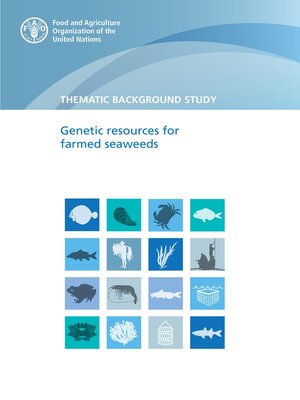Genetic Resources for Farmed Seaweeds
ebook ∣ Thematic Background Study
By Food and Agriculture Organization of the United Nations

Sign up to save your library
With an OverDrive account, you can save your favorite libraries for at-a-glance information about availability. Find out more about OverDrive accounts.
Find this title in Libby, the library reading app by OverDrive.



Search for a digital library with this title
Title found at these libraries:
| Loading... |
The increasing global population needs to source food from the ocean, which is a much greater area than the land. The ocean is rich with diversified flora and fauna, and both are sources of proteins, vitamins, minerals, phytohormones, and bioactive compounds. Thousands of species of macroalgae (seaweed) dominate the vegetation of the seafloor from the intertidal to the subtidal zone. The domestication of several economically important seaweed such as Saccharina, Undaria and Pyropia in China, Japan and the Republic of Korea, and Kappaphycus and Eucheuma in Indonesia, Malaysia, the Philippines and the United Republic of Tanzania led to the intensive commercial cultivation of these seaweeds. Except for the United Republic of Tanzania, the commercial farming of seaweed, both temperate and tropical species, is centred in Asia. Despite the presence of several economically important seaweeds outside Asia, commercial farming is practised only in a few of non-Asian countries. These include Chile for Gracilaria and Macrocystis (Buschmann et al., 2001); France for Palmaria palmata, Porphyra umbilicalis and Undaria pinnatifida (Netalgae); and Canada for Saccharina latissima in integrated multi-trophic aquaculture (IMTA) (Chopin et al., 2013) and Chondrus crispus. Trial cultivation of Saccharina spp. and P. palmata is now taking place in Western Europe. Seaweeds are farmed mainly for food such as sea vegetables and food ingredients (Bixler and Porse, 2011), as well as feed (Wilke et al., 2015; Norambuena et al., 2015). However, there is increasing interest in their use for biorefinery products that require a vast amount of biomass which must be farmed.






